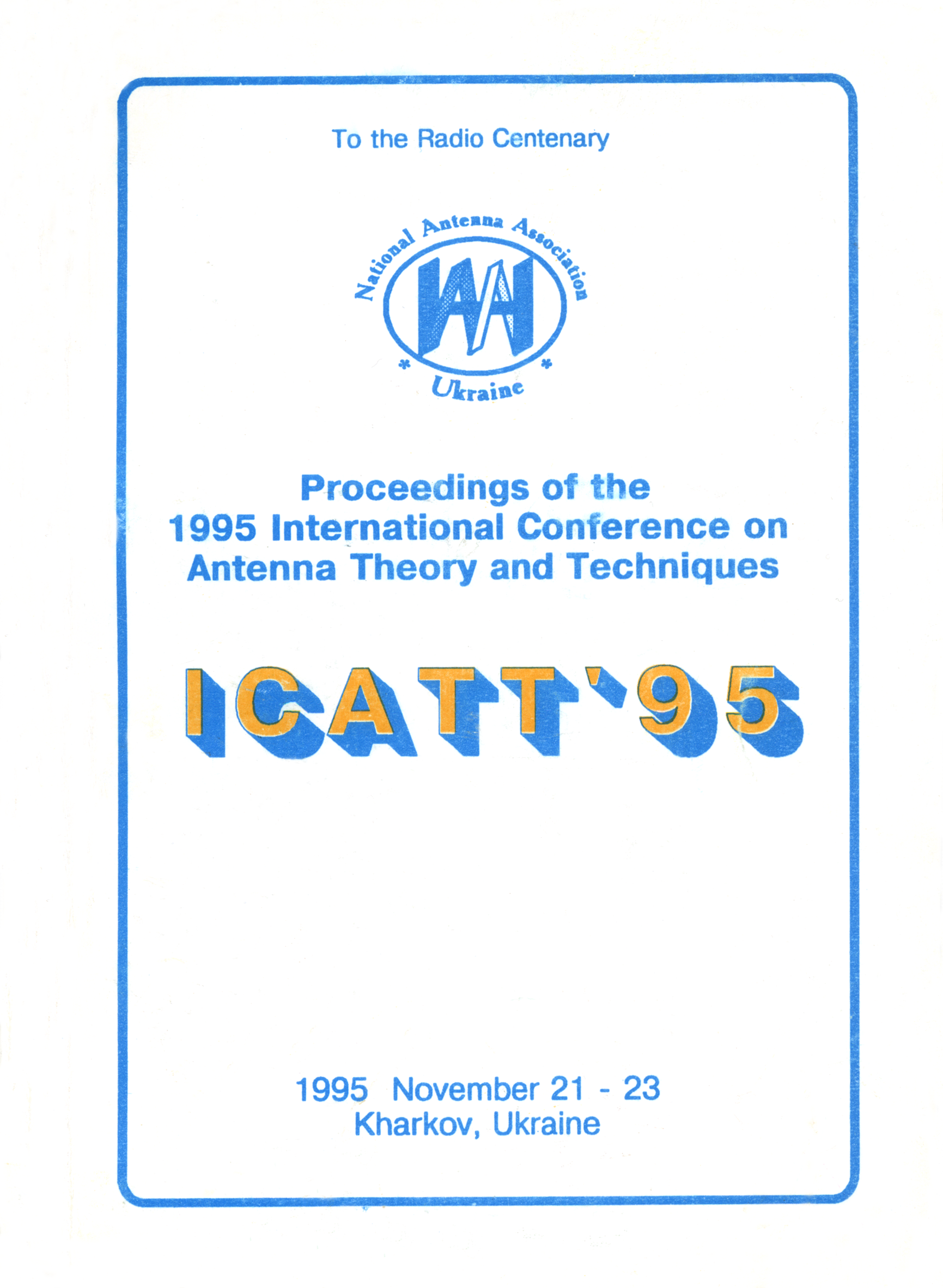Mutual coupling effect of antenna elements in the adaptive antenna arrays designed for signal separation
DOI:
https://doi.org/10.1109/ICATT.1995.1234141Abstract
It is known that Adaptive Antenna Arrays (AAA) may be used for the signal separation (signals and noise) arriving from different directions. The object of this work is investigation of mutual coupling effect of antenna elements on the efficiency of signal separation. Let us assume that L-non-correlated signals arrive at the input of an N- element AAA, and the function of AAA consists in the maximum possible suppression at each i-th output of L-l noise and the most possible amplification of an appropriate j-th signal. For the case of idealized AAA consisting of non-interacting antenna elements (AE), it is not difficult to show that at each j-th of AAA the output maximum suppression of interfering signals is achieved by using as a weight the coefficients of eigenvector * corresponding to the minimum eigen number of the matrix Rxj (*, Rxx is the correlation matrix (CM) of input signals, Rjj is CM j-th signal). * is known to be not a signal one and maximum amplification of the j-th signal is achieved in case of
* (1)
where * is the matrix joined for Rxj; *; φjl is a phase drift cased by the j-th signal delay at l-th AE relative to the first one; (+) is a Hemite conjunction sign. Based on (1) the separation algorithm represents two-stage procedure: a) definition of signal arrival directions; b) construction of the system of vectors Vj and projectors Bj (λmin), j = *. With mutual coupling effect AE can be written in the form of Rxj = G+RxjG where G is the matrix of mutual coupling coefficients. Matrix R'xj is Hermite conjugate to Rxj and in monochromatic approximation * and if a finite (nonzero) spectrum is taken into account *. Besides, it can be shown that Pcj ~ Pcj (Pcj, Pcj are the powers of the j-th signal at the j-ih output in absence and presence of AE mutual coupling effect) independently of the spectrum width Thus, in general case AE mutual coupling effect degrades the quality of signal separation, and the level of degradation an the relative width of signal spectrum.

